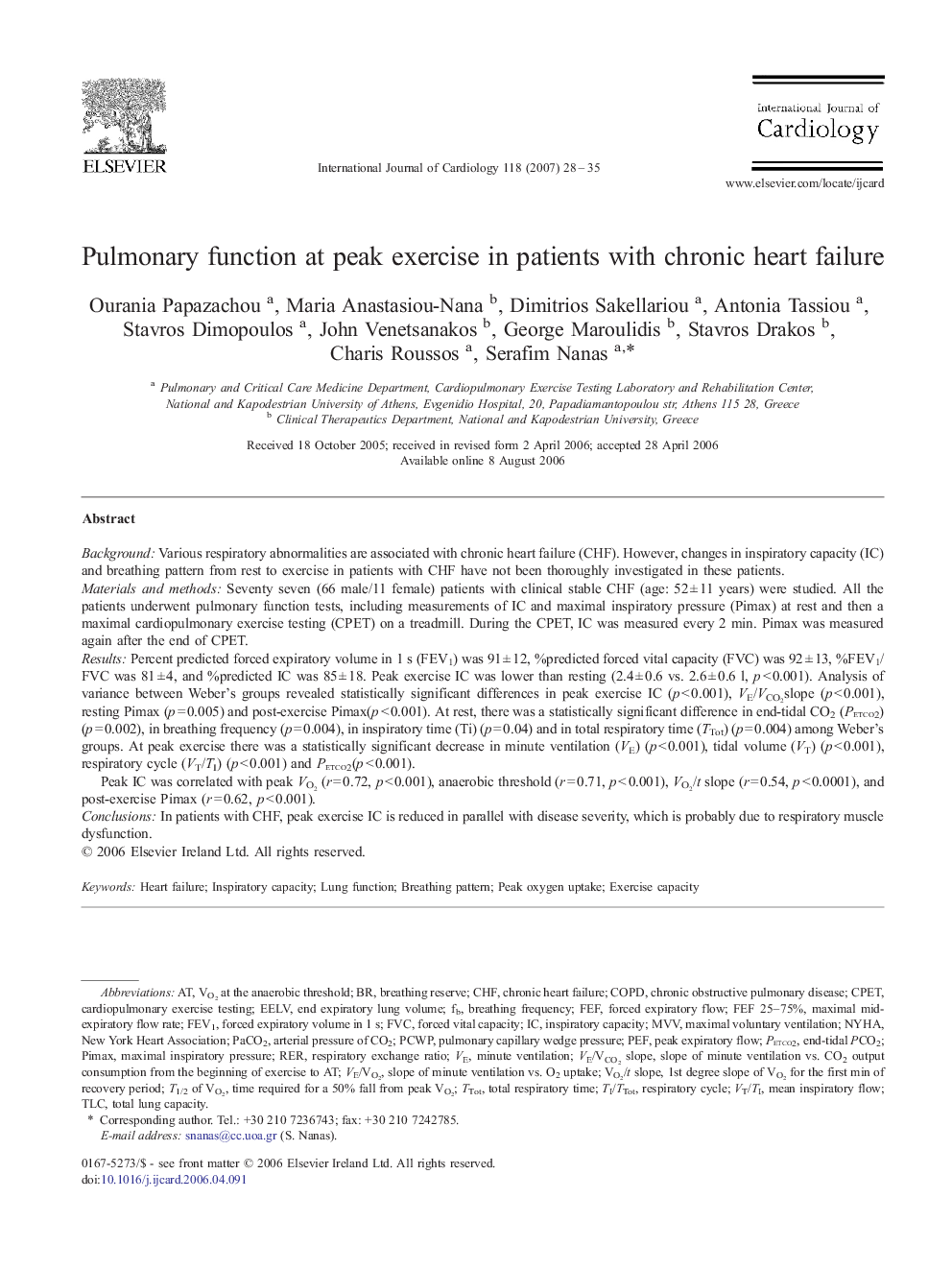| کد مقاله | کد نشریه | سال انتشار | مقاله انگلیسی | نسخه تمام متن |
|---|---|---|---|---|
| 2936637 | 1576376 | 2007 | 8 صفحه PDF | دانلود رایگان |

BackgroundVarious respiratory abnormalities are associated with chronic heart failure (CHF). However, changes in inspiratory capacity (IC) and breathing pattern from rest to exercise in patients with CHF have not been thoroughly investigated in these patients.Materials and methodsSeventy seven (66 male/11 female) patients with clinical stable CHF (age: 52 ± 11 years) were studied. All the patients underwent pulmonary function tests, including measurements of IC and maximal inspiratory pressure (Pimax) at rest and then a maximal cardiopulmonary exercise testing (CPET) on a treadmill. During the CPET, IC was measured every 2 min. Pimax was measured again after the end of CPET.ResultsPercent predicted forced expiratory volume in 1 s (FEV1) was 91 ± 12, %predicted forced vital capacity (FVC) was 92 ± 13, %FEV1/FVC was 81 ± 4, and %predicted IC was 85 ± 18. Peak exercise IC was lower than resting (2.4 ± 0.6 vs. 2.6 ± 0.6 l, p < 0.001). Analysis of variance between Weber's groups revealed statistically significant differences in peak exercise IC (p < 0.001), VE/VCO2slope (p < 0.001), resting Pimax (p = 0.005) and post-exercise Pimax(p < 0.001). At rest, there was a statistically significant difference in end-tidal CO2 (Petco2) (p = 0.002), in breathing frequency (p = 0.004), in inspiratory time (Ti) (p = 0.04) and in total respiratory time (TTot) (p = 0.004) among Weber's groups. At peak exercise there was a statistically significant decrease in minute ventilation (VE) (p < 0.001), tidal volume (VT) (p < 0.001), respiratory cycle (VT/TI) (p < 0.001) and Petco2(p < 0.001).Peak IC was correlated with peak VO2 (r = 0.72, p < 0.001), anaerobic threshold (r = 0.71, p < 0.001), VO2/t slope (r = 0.54, p < 0.0001), and post-exercise Pimax (r = 0.62, p < 0.001).ConclusionsIn patients with CHF, peak exercise IC is reduced in parallel with disease severity, which is probably due to respiratory muscle dysfunction.
Journal: International Journal of Cardiology - Volume 118, Issue 1, 16 May 2007, Pages 28–35